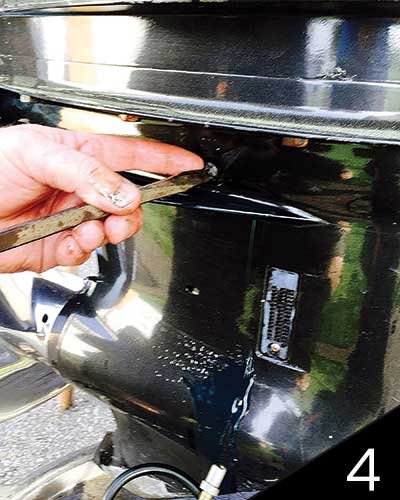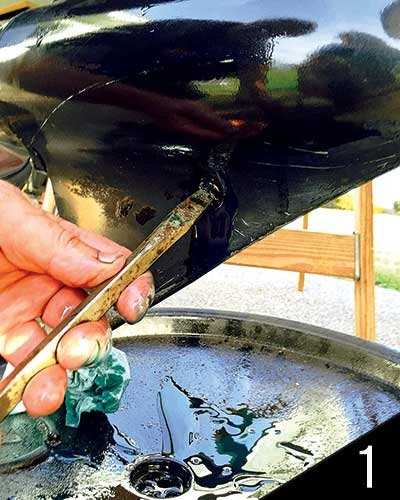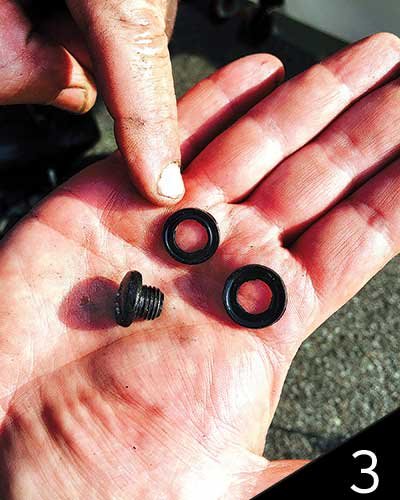Whether clear, milky, or burnt, the old oil must be drained completely and replaced with new. Here are some helpful tips when performing this ritual.
At least once a year, preferably when the season ends, you need to drag the drain pan out, buy some new lube, and spend half an hour draining and refilling the unit. Here’s why. The lubricant’s properties break down over time and with use, and its ability to keep the metal gears, bearings, and shafts operating without touching each other is diminished. Second, the lube itself often becomes contaminated; tiny metal shavings (from normal gear wear) and moisture eventually reduce the lubricant’s ability to reduce friction and prevent corrosion. Also, replacing the lube is a great way to get an up close and personal view of the guts of your engine’s lower unit.
Do this at season’s end because if water has entered the unit, you don’t want it inside the gearcase while the unit is laid up all winter. As it rests, any water inside will stick to the gears, bearings, and shafts and cause corrosion. Once corrosion/rust watermarks appear on the bearing surfaces and the bearings themselves, it’s only a matter of time until the unit fails during use. If you drain water-contaminated lubricant out, even if you can’t fix the cause (typically a failed prop-shaft seal) right away, you can at least fill the unit with fresh, clean lube and avoid the rust problem over the layup period. In addition, a serious case of water contamination can crack the gearcase if it’s exposed to freezing conditions.
2. Fill slowly; there’s no rush. Notice the solid flow of lube coming out of the vent hole; no air bubbles means it’s truly full.
3. Notice the expanded, distorted drain-screw gasket on the right; a new one is on the left. These gaskets are cheap; replace them each time you change the gear lube.

4. After filling the unit so that the new lube runs out of the upper vent hole, replace the upper vent screw; this creates a small vacuum so that when you remove the filler and replace the lower drain screw, you won’t lose much lubricant in the process.
5. Use a commercial filling canister if you have more than one or two units to maintain. You can purchase these through your local dealer.
“Clean and healthy” gear lube, depending on the dye used in its formulation, is typically amber, blue, or red in color and clear. If it’s contaminated by water, it appears milky and has a coffee-with-cream color. The other obvious condition is burned lubricant; it is blackish in color and has a bad, burnt smell. This indicates that inside there’s either a wear problem or an improper gear-setup problem. Many gearcase drain screws have a built-in magnet that collects the metal shavings. A small amount of fine shavings on this magnet when you drain the lube is normal. A large amount (larger than a pencil eraser) of heavy metal filings, coupled with the burnt, blackish lube, indicates a serious wear problem inside the case with damage occurring.




